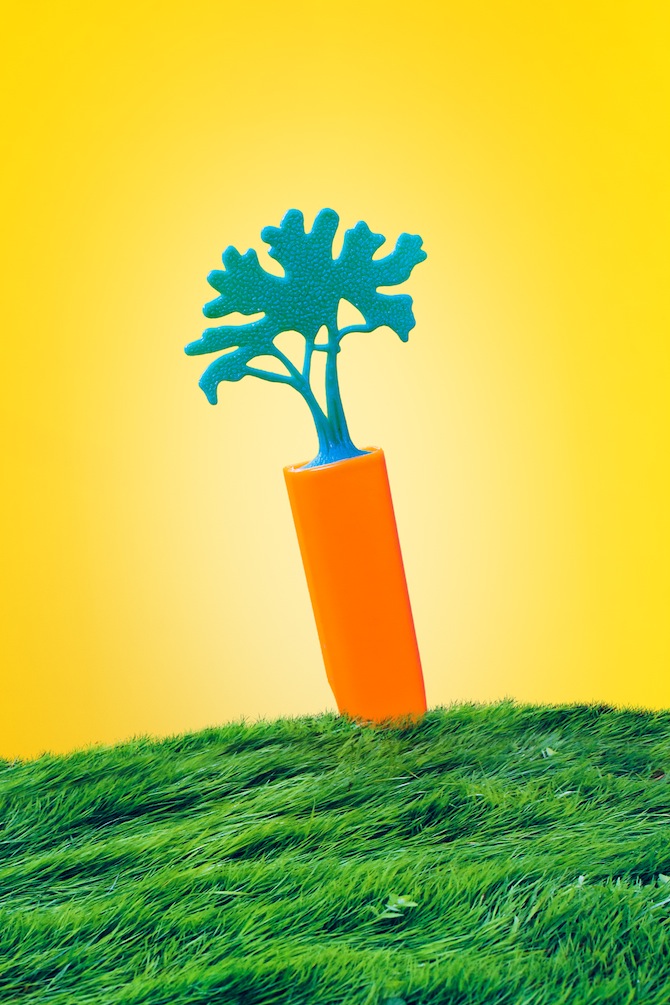

 all images: Exhibition "CRAFT & BLING BLING – FAKE" at Depot Basel // detail photos by © Thomas Albrecht, installation views by © Gregor Brändli
all images: Exhibition "CRAFT & BLING BLING – FAKE" at Depot Basel // detail photos by © Thomas Albrecht, installation views by © Gregor Brändli
The design exhibition CRAFT & BLING BLING – FAKE at DEPOT BASEL in Switzerland discusses a model of doubt and truth along the interpretation of fakeness. Twelve international jewellery designers created specific art and design objects that are concerned with oscillating emphasis on materiality and appearances, authorship and duplication, adaption and replica, superficiality and preciousness. Presented inside a cube of blue velvet, their works describe reversed encounters with fakeness, in which the designers play with the semiotics of fake and transform its implied crisis of originality – the effect of doubt – into an art form itself.
Both, art and design, are premised on the necessity of an object’s originality. The original’s brand or its signature serve as functions conforming a status, they promise a temptation of ownership. For reasons of tangible quality and value, an original product of art or design is defined by its uniqueness – a fundamental feature that is fetishised by the consumer. It is this particular, almost religious connection between societies and products, that led Karl Marx to his critique on commodity fetishism and cultural theorist Hartmut Böhme to his definition of the modern fetishist consumption as driven by the products’ unrivalled aura, their charisma and their libidinous attribution. Therefore, the smallest indication of fakeness does not only rupture the customers’ and viewers’ belief in quality and handcraft, in the sublime and the ingenious, but it also forces them to trust in expert’s opinions, labels, stamps and institutions. A fragile antagonism between belief and doubt shapes the concept of authenticity. In this sense, the initial currency of originality is trust, which is – as in religion, relationships, money or politics – a precarious construction.
Once uncovered, fakes touch the art and design world’s tender spot: Their criminal economic success questions the horrendous amounts that are spent in auctions or for luxury design items. Opposite to design fakes, however, art forgery crimes are not only condemned, but also celebrated as heroic acts of exposing the market’s speculations. Frequently, art forgers become media-darlings, charlatan-storytellers. But paradoxically, one reason for their popularity is the fact that faking requires superior crafting skills, as the original’s crisis is based on a realistic illusion of valuableness – a manipulation that is employed by designer Adam Grinovich, who created glittering abstract objects with the appearance of gold leaf by means of a composite of cheap materials. Working with similar strategies, Florian Weichsberger approached the rustic and aged aesthetics of Stone Age rocks with casts of plastic, and Rainer Kaasik-Aaslav precipitates a failure of sacredness’ symbols by allowing artificial ruby and marble to substitute their archetypes. A fake always evokes mistrust, because it is the embodiment of a lie. In the contribution of Julia Walter, this counts for the materiality of her graphic objects, as much as for the facial patterns of emotions that they express. Also following the motif of communication, Florian Milker developed shiny and perfectly rounded forms that he casted out of a woman’s bra, as to pose a question on vanity’s visual nature.
The ambivalence of authenticity is also characterised by a contradiction of limited availability and fast reproduction. Artist and design labels demonstrate that it is first and foremost an idea, a style or a cooperate design that ought to be copyrighted. Meanwhile, the execution of products is often transferred to employees, assistants and factories to ensure not only quality, but also quantity. In this sense, only a small threshold separates an original from a reproduction or a copy. This unsettledness is also involved in Barbara Schrobenhauser’s collection of golden items, which she presents seemingly random, as to motivate viewers to engage with the material’s variety. In turn, Edgar Mosa dedicated his project to the dichotomy of commodity’s double-existence and subsequently recreated digitally reproduced images into haptic items, causing them to loose their purpose.
The exhibition CRAFT & BLING BLING – FAKE also establishes an emancipation of the fake: While Kevin Hughes’ “Enthusiastic Carrot” expresses the satisfaction of being exactly as authentically fake as promised, Sophie Hangart’s golden good luck charms “Fortuna” distance themselves from their primal form, casted from excrement, and use their new materiality to become more precious than the original will ever be. Designer Jing He delicately reworked an imitated Jade stone and relocated its material components, as to transform the effigy into an autonomous object. In that respect, also Mallory Weston refers to the aspect of fake’s beauty, by emphasising its garish and opulent characteristics with two golden objects, describing the shape of cactuses. Ultimately, Philip Eberle reverses the worthless status of the fake, by placing the letters “FA KE” on two handmade, golden signet rings and thus allows the fake to soar above its own fate.
This text has been published in Current Obsession Magazine, accompanying the exhibition.
CRAFT & BLING BLING – FAKE
6 June - 6 July 2014
DEPOT BASEL
Ort für kontemporäre Gestaltung
Voltastrasse 43
CH-4056 Basel
Opening Hours: Fr-Sat 14-19h, Sun 11-18h
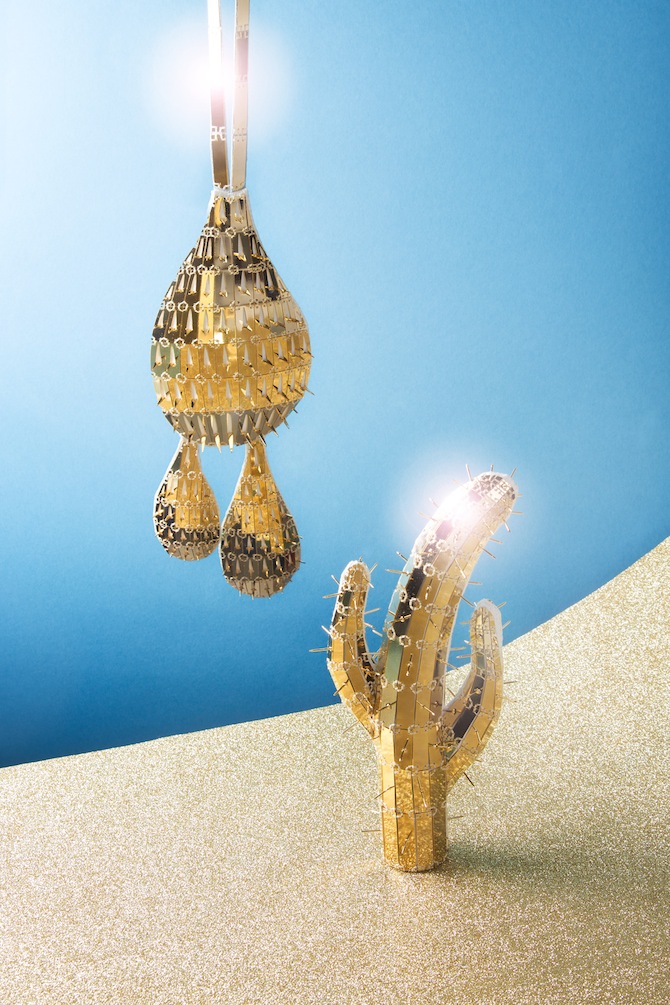
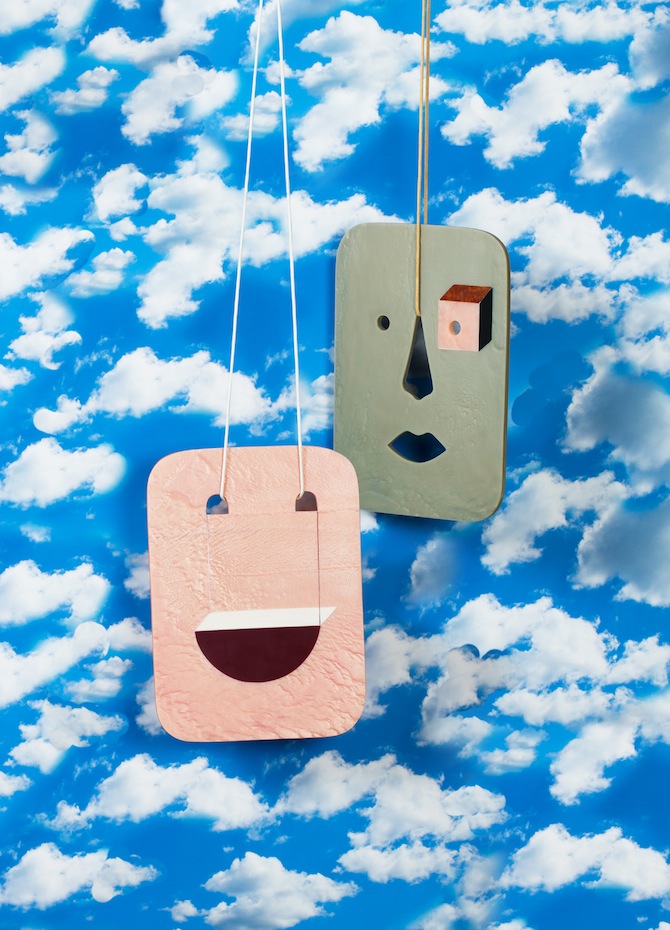
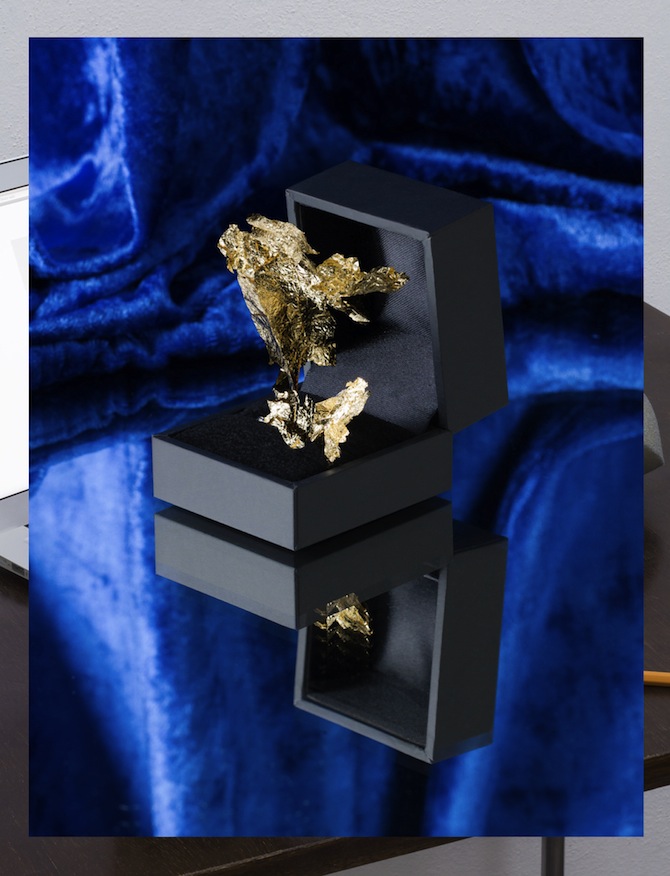
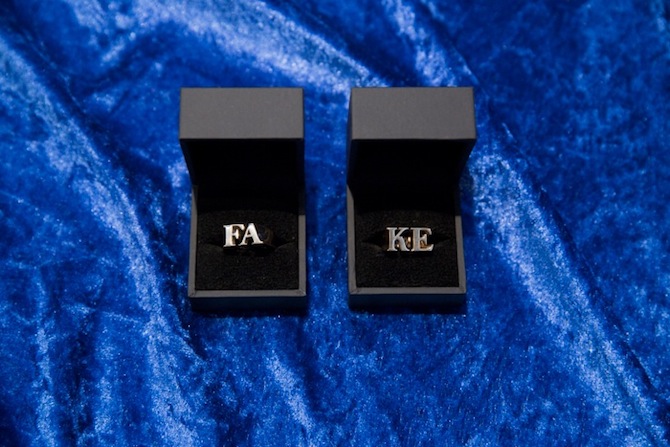
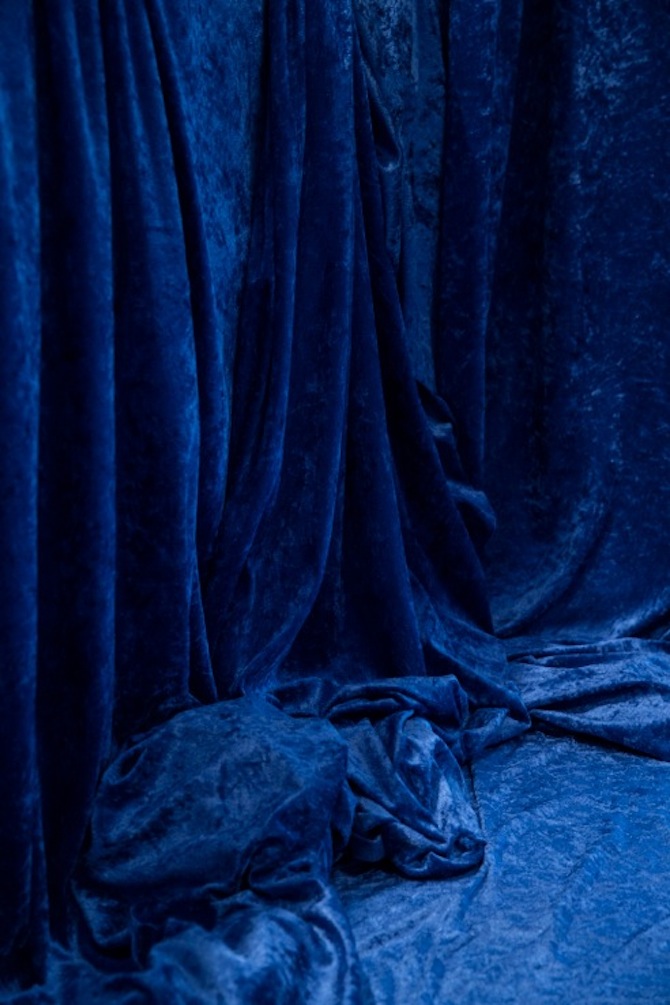
all images: Exhibition "CRAFT & BLING BLING – FAKE" at Depot Basel // detail photos by © Thomas Albrecht, installation views by © Gregor Brändli
